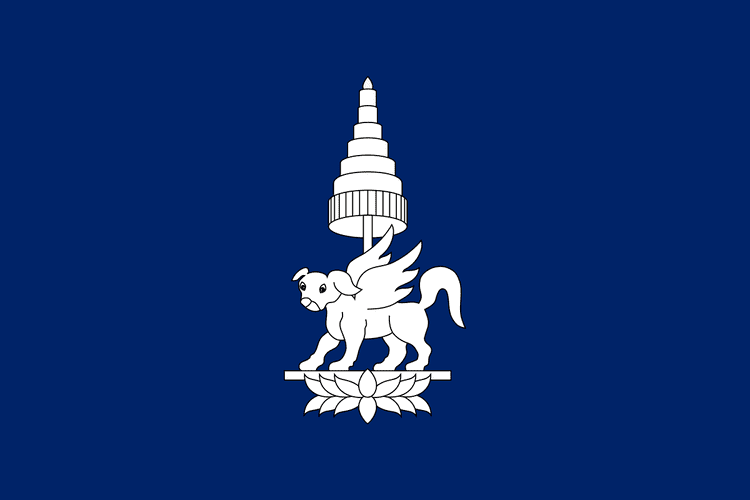Government Monarchy Kingdom annexed by Kingdom of Laos 1946 Founded 1713 Date dissolved 1946 | Religion Buddhism Lan Xang divided 1713 Preceded by Succeeded by | |
 | ||
The Kingdom of Champasak (Lao: ຈຳປາສັກ [càmpàːsák]) or Bassac, (1713–1946) was in 1713 proclaimed a Lao kingdom under Nokasad, a grandson of King Sourigna Vongsa, the last king of Lan Xang; and son-in-law of the Cambodian King Chey Chettha IV. Bassac and the neighboring principalities of Attapeu and Stung Treng, emerged as power centers under what was later to be described as the Mandala Southeast Asian political model.
Contents
History
The kingdom was sited on the eastern or Left Bank of the Mekong, south of the Right Bank principality of Khong Chiam where the Mun River joins; and east of where the Mekong makes a sharp bend to the west to return abruptly and flow southeasterly down to what is now Cambodia. Bassac, the capital city, was on the right bank, near where the Bassac River joins the Mekong, connecting to Phnom Penh.
Due to scarcity of information from the periods known as the Dark ages of Cambodia, the Khorat Plateau seems to have been largely depopulated, and Left Bank principalities began to repopulate the Right. In 1718, a Lao emigration in the company of an official in the service of King Nokasad founded Muang Suwannaphum as the first recorded population of Lao in the Chi River valley—indeed anywhere in the interior of the plateau.
At the beginning the 19th century, and ignoring the world-wide agricultural disaster accompanying the 1816 Year Without a Summer, Bassac was said to be on a prosperous trade route as the outlet for cardamon, rubber, wax, resin, skins, horns, and slaves from the east bank to Ubon, Khorat, and Bangkok. The region then fell victim to Siamese and French struggles to extend suzerainty.
After the Laotian Rebellion of 1826-1829, Suwannaphum lost its status and Champasak was reduced to vassalage. The Siamese-Cambodian War of 1831-1834 reduced the entire region to vassalage, a situation soon further complicated by the French striving in the same region to establish what was to become French Indochina.
Following the Franco-Siamese War of 1893, the Left Bank fell under French rule as an administrative block, with its royalty stripped of many privileges; French colonial administration of Lao kingdoms impoverished the region. The 1893 treaty called for a twenty-five-kilometer-wide demilitarized zone along the Right Bank, which made Siamese control impossible. It soon became a haven for lawless characters from both banks of the river. Lack of clear chains of authority resulted in turmoil in the whole region, and in what was known to the Siamese side as the "Holy Man's Rebellion".
Ong Keo and Ong Kommandam of the Bolaven Plateau Alak people, led initial resistance against French control, which subsumed into the First Indochina War. The parallel right-bank Holy Man's Rebellion of 1901-1902 was a short-lived cause. Following legal actions against captured local leaders of the movement, the Thai government considered the case of the rebellion closed. The right-bank dependencies were absorbed into the Siamese North-East Monthon Isan (มณฑลอีสาน) and the House of Na Champassak ceased to rule.
In 1946, the kingdom, established under the grandson of the last king of Lan Xang, was reduced to the status of a province in the first-ever united Kingdom of Laos; which on 2 December 1975, became the Lao People's Democratic Republic.
